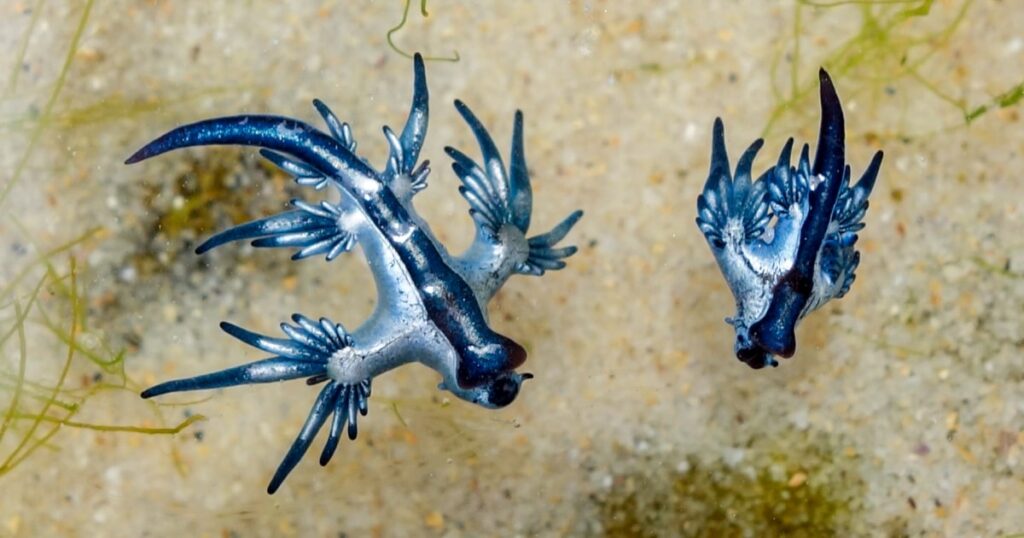CORPUS CHRISTI, Texas — Spring breakers flocking to Texas beaches this month could stumble upon a sight many have never seen — a bright blue and silver sea slug known as the blue dragon.
While the tiny, 1-inch creatures may look like fun, researchers warn that touching them could result in a painful sting.
“There’s all kinds of stories of people accidentally stepping on these blue dragons or picking them up and squeezing them and getting stung. And yeah, it doesn’t end well,” said Jace Tunnell, a marine biologist at Texas A&M University-Corpus Christi.
Blue dragons, known scientifically as Glaucus atlanticus, sail on the surface of the ocean feeding on toxins from the Portuguese man-of-war and other jellyfish-like organisms. As southeast winds increase during the spring, the slugs blow ashore with the potential to release those dangerous toxins upon unsuspecting beachgoers.
“It would be 3 to 5 times what a man-of-war sting would be,” said Tunnell, who spotted one of the first blue dragons of the season on North Padre Island last month. The pain can last for up to three hours.
“You will know immediately if you are stung by a blue dragon,” Tunnell said. “It will be intense pain. It will feel like somebody has needles that they’re scraping across your skin.”
Blue dragons live in the Atlantic, Pacific and Indian oceans, but their habitat is expanding, according to American Oceans, an advocacy group that aims to educate the public about marine species. “Such examples are on the east and south coasts of South Africa, in European waters, near Mozambique, and off Australia’s east coast,” the group writes.
No definitive climate change connection has been made, but scientists say it’s likely a factor. “With warming temperatures, we would expect the blue dragon’s range to expand over time,” Tunnell said.
One reason we may be hearing about blue dragons more now is increased awareness. “I think we are just noticing them more,” he said.
Blue…
Read the full article here





